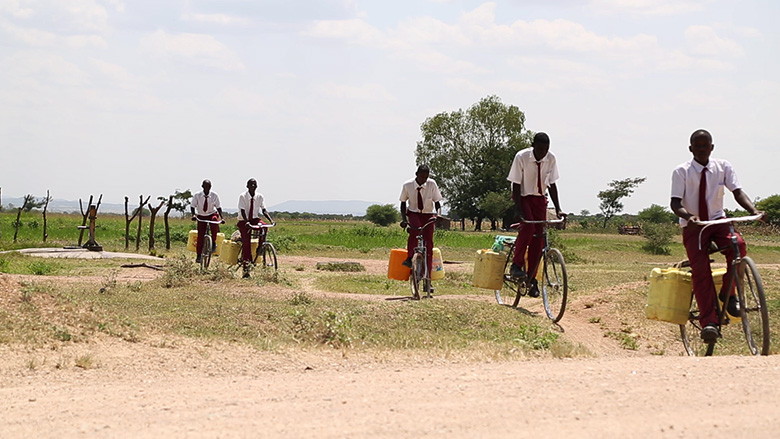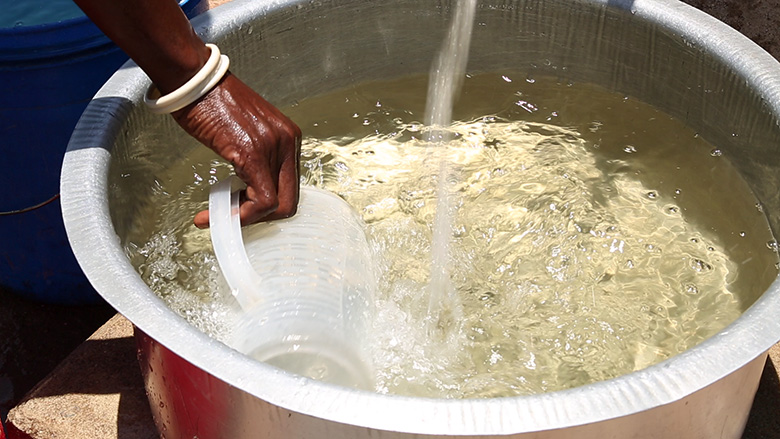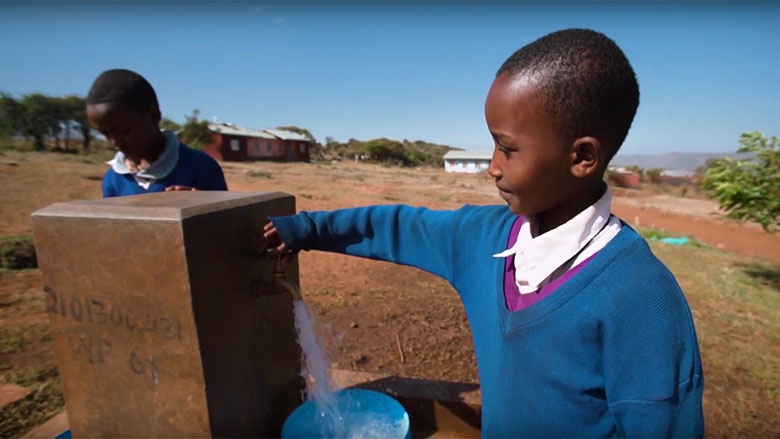Challenge
Tanzania, a country in East Africa, was challenged with unstable and insecure fresh water supplies. Water is intrinsically tied to inclusive economic growth, food security, and poverty reduction. The lack of sound water supply and sanitation services (WSS) in Tanzania was a bottleneck to sustainable development. In 2005, over 14 million rural residents and 1.8 million urban residents lived without safe water. Moreover, around 10 million people in rural areas lived in poverty.
Due to insufficient maintenance in the WSS sector, Tanzania needed to improve integrated water resources management and development. In addition, it was important to improve investments in the protection and conservation of critical water sources such as aquifers and wetlands.
Approach
The design of the project was relevant to the needs of the wider water sector, economy, and society. With a focus on supporting the government’s poverty alleviation strategy, the project set out to improve the governance of water resources management through measures to boost the sustainable delivery of rural and urban WSS services.
This project is part of the first phase of the government’s five-year Water Sector Development Program, a 20-year program (2005-2025) that aims to improve water resources governance and management, among other goals.
With an eye towards reducing poverty and meeting the Millennium Development Goals (MDGs) for sanitation and hygiene, an important component of the project was strengthening water sector institutions. Central strategies for improving WSS service delivery included the following: promoting household adoption of latrines; installing hand-washing facilities in program villages of varying sizes; and engaging in capacity building activities to improve long-term water resources governance.
Results
The Water Sector Support Project (2007-2015) along with other development partners and the Tanzanian Government’s funding, directly benefitted 14,461,715 people in both rural and urban areas of Tanzania. A total of over 7 million women benefitted from the program’s interventions. Through measures aimed at improving water quality, reducing poverty, and increasing access to sanitation, the project served as a lever of change toward a more inclusive Tanzania. The positive project results were due to the collective contributions of multiple development partners, and the World Bank was the overall coordinator of the multi-sector program.
The following key results were observed during the life of the project:
- 3 million people in urban areas were provided with access to improved water sources;
- 6 Basin Water Offices were fully operational and implementing an approved plan for integrated basin water management, in addition to a Central Water Board;
- 9.2 million people in rural areas were provided with access to improved water sources;
- 5,150,000 people were provided with access to improved sanitation;
- 35,908 water points were developed in program areas;
- 244,270 new piped household water connections were created;
- 4,330 water user permits and 24 discharge permits were granted;
- Water supply investment and capacity building under the project benefited 23 regional centers, as well as water supply and sanitation authorities;
- Several institutional bodies (e.g. steering committee, water sector working groups, technical working groups) were established;
- 1,680 schools constructed new or upgraded their school sanitation facilities;
- 16,183 villages signed the declaration to improve household sanitation.
Bank Group Contribution
The World Bank initially provided the Republic of Tanzania with credit, through the International Development Association, in the amount of US$200 million for the project. Additionally financing for the IDA credit of US$44.9 million equivalent was approved in May 2014, totaling to a refinanced IDA credit of US$244.9 million equivalent. Actual IDA financing at project closing amounted to US$251.69 million equivalent.
Partners
The Ministry of Water and Irrigation of Tanzania was responsible for project coordination. However, a number of other institutions supported the implementation and management of the project, including the following: the Ministry of Health and Social Welfare; the Ministry of Education, Science, Technology, and Vocational Training; the President Office’s Regional Administration and Local Government; local government authorities; urban water supply and sanitation authorities; community-owned Water Supply Organizations; the Water Development and Management Institute; and line agencies at regional and district levels responsible for WSS service provision. The different government were directly involved in the project implementation and management – for example, the Ministry of Health and Social Welfare provided oversight for the implementation arrangements for the sanitation and hygiene subcomponent. The
The U.K. Department for International Development (DFID), United States Government, the African Development Bank, the Netherlands Ministry of Foreign Affairs and the Ministry of Development Cooperation, Germany’s Kreditanstait Fur Wiederaufbau (KfW), German Society for International Cooperation (Deutsche Gesellschaft für Internationale Zusammenarbeit, GIZ), and the Japan International Cooperation Agency (JICA) provided additional project funding.
Moving forward
In terms of the future of water resources management in Tanzania, six out of nine Integrated Water Resources Management and Development plans were completed and pending approval by the National Water Board. The Ministry of Water and Irrigation of Tanzania initiated a study to identify and mobilize sustainable financing sources for the Basin Water Offices (BWOs). Additionally, the institutional strengthening and capacity building project interventions set the stage for a strong foundation for monitoring water points. In the face of a changing climate and global economy, the government will continue to invest in measures to strengthen the water and sanitation sector.

Beneficiaries
In Kidotoni village, Kilimanjaro region, Matilda Ngianaeli, 52, is enjoying access to a newly provided water scheme that is solar powered.
“We used to draw water from a stream in Makuyuni which is a long distance from here and you needed to have the stamina to take on that journey,” Ngianaeli said. “If you didn’t have it then you had to buy water from those who owned bicycles and a 20-liter jerry-can would cost you Sh500 which is a lot of money if you consider that we needed more than one jerry-can in a day. Today, if you don’t have a home connection, you can still access the public water point where you pay Sh100 for three 20-liter jerry-cans.”
Ngudu High School, with 881 students and 49 teachers, is one of the many institutions that now has access to water.
“When the service arrived at our school it was an incredible moment,” said John Kimasa who heads the school. “Each day, two classes would lose two hours of studies as they were required to go and fetch water for the school from the nearby district prison. Teachers and students would agree on how to make up for lost time during the after-hours and this was a big problem but we had to ensure we covered the syllabus on time. We are happy the school now has its own permanent connection together with storage should there be any system breakdown.”
Kimasa said it wasn’t just the children who suffered without access to water, but teachers too.
“Without water at your home, it is hard for anyone to concentrate on the job at hand,” said Kimasa, who noted that lack of water access made it difficult to attract qualified teachers to the high school. “But since the new connection, our teachers are more motivated. We still have a deficit of five teachers, but we expect that when the government assigns them, they will not hesitate to join now.”
Residents such as Mudo benefit from the Nyanguge-Muda piped scheme that was completed in February 2015, and is already providing relief during its current testing stage. Mayanda and Said are some of the 3,500 beneficiaries of the new piped scheme in Inonelwa, which was completed in July 2014.
“I had no bicycle, so I would leave the house at 5 a.m. to go to collect water, sometimes as far as Nyangege which is six km and I would get back after 9.00 a.m.,” said Mayanda, who is in her 40s. “That is when I would start other chores. We were happy only during the rainy season and when it ended, life became very difficult.”


